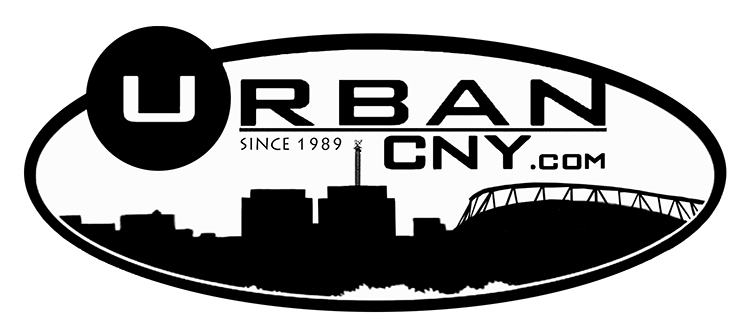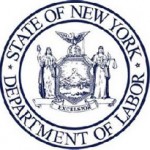Statewide Unemployment Rate Drops to 3.9%
In September 2019, the number of private sector jobs in New York State grew by 6,300, or 0.1%, to 8,292,700, according to preliminary figures released today by the New York State Department of Labor. Since the beginning of Governor Andrew M. Cuomo’s administration, New York State’s economy has added 1,194,600 private sector jobs.
In September 2019, New York State’s seasonally adjusted unemployment rate decreased from 4.0% to 3.9%. In January-September 2019, the jobless rate in New York State declined by 0.2 percentage points and the number of unemployed New Yorkers dropped by over 21,000 compared to the same period in 2018.
The State’s private sector job count is based on a payroll survey of 18,000 New York employers conducted by the U.S. Department of Labor’s Bureau of Labor Statistics. Monthly payroll employment estimates are preliminary and subject to revision as more data become available the following month. The federal government calculates New York State’s unemployment rate based partly upon the results of the Current Population Survey, which contacts approximately 3,100 households in New York State each month.
“In September 2019, the New York State economy expanded by 6,300 private sector jobs. At the same time, the statewide unemployment rate decreased from 4.0% to 3.9%,” said Bohdan M. Wynnyk, Director of the New York State Department of Labor’s Division of Research and Statistics.
Note: Seasonally adjusted data are used to provide the most valid month-to-month comparison. Non-seasonally adjusted data are valuable in year-to-year comparisons of the same month – for example, September 2018 versus September 2019.
United States and New York State: August – September 2019
1) Jobs data (seasonally adjusted):
The table below compares the over-the-month change in total nonfarm and private sector jobs in the United States and New York State in August-September 2019.
Change in Total Nonfarm and Private Sector Jobs
|
||||
Change in
|
Change in
|
|||
Net |
% |
Net |
% |
|
United States |
+136,000 |
+0.1% |
+114,000 |
+0.1% |
New York State |
+7,200 |
+0.1% |
+6,300 |
+0.1% |
2) Unemployment rates (seasonally adjusted):
The State’s unemployment rate is calculated by the U.S. Bureau of Labor Statistics, using a statistical regression model that primarily uses the results from the Current Population Survey (CPS). The CPS contacts approximately 3,100 households in New York State each month.
In September 2019, the statewide unemployment rate decreased from 4.0% to 3.9%. New York City’s unemployment rate decreased from 4.2% in August to 4.1% in September 2019. Outside of New York City, the unemployment rate remained unchanged at 3.8%.
The number of unemployed New Yorkers also decreased over the month, from 377,600 in August to 376,000 in September 2019.
Unemployment Rates (%)* |
|||
*Data are preliminary and subject to change, based on standard procedures outlined by the U.S. Bureau of Labor Statistics. |
|||
September 2019* |
August 2019 |
September 2018 |
|
United States |
3.5 |
3.7 |
3.7 |
New York State |
3.9 |
4.0 |
3.8 |
New York City |
4.1 |
4.2 |
3.9 |
NYS, outside NYC |
3.8 |
3.8 |
3.8 |
United States, New York State and Metro Areas: September 2018 – September 2019
1) Jobs data (not seasonally adjusted):
The following table compares the changes in total nonfarm and private sector jobs occurring in the United States, New York State and metro areas in the State, between September 2018 and September 2019.
Change in Total Nonfarm and Private Sector Jobs by Area
|
||||
Change in
|
Change in
|
|||
| Note: The sum of sub-state area job estimates will usually differ from the New York State total. This is because the State total is calculated separately from the sub-state areas and is estimated based on an independent sample. | ||||
Net |
% |
Net |
% |
|
United States |
+2,156,000 |
+1.4% |
+1,979,000 |
+1.6% |
New York State |
+123,500 |
+1.3% |
+112,700 |
+1.4% |
Albany-Schenectady-Troy |
+4,000 |
+0.9% |
+3,400 |
+0.9% |
Binghamton |
-200 |
-0.2% |
-100 |
-0.1% |
Buffalo-Niagara Falls |
+2,700 |
+0.5% |
+2,700 |
+0.6% |
Dutchess-Putnam |
+2,100 |
+1.4% |
+2,200 |
+1.8% |
Elmira |
+100 |
+0.3% |
+100 |
+0.3% |
Glens Falls |
+300 |
+0.5% |
+200 |
+0.4% |
Ithaca |
+4,200 |
+6.5% |
+4,300 |
+7.7% |
Kingston |
+1,700 |
+2.7% |
+1,700 |
+3.5% |
Nassau-Suffolk |
+10,900 |
+0.8% |
+10,600 |
+0.9% |
New York City |
+83,900 |
+1.8% |
+77,800 |
+2.0% |
Orange-Rockland-Westchester |
+5,400 |
+0.7% |
+5,300 |
+0.9% |
Rochester |
+4,300 |
+0.8% |
+3,200 |
+0.7% |
Syracuse |
+8,800 |
+2.7% |
+8,400 |
+3.2% |
Utica-Rome |
+500 |
+0.4% |
+700 |
+0.7% |
Watertown-Fort Drum |
0 |
0.0% |
0 |
0.0% |
Non-metro counties |
+6,100 |
+1.2% |
+5,700 |
+1.5% |
Job highlights since September 2018:
- Thirteen metro areas in New York State added private sector jobs since September 2018. The most rapid growth was in these metro areas:
- Ithaca (+7.7%)
- Kingston (+3.5%)
- Syracuse (+3.2%)
- New York City (+2.0%)
- Dutchess-Putnam (+1.8%)
- Non-metro counties in New York added 5,700 private sector jobs over the past year.
- Over the past year, one metro area in New York State lost private sector jobs: Binghamton (-0.1%).
Change in jobs by major industry sector: September 2018 – September 2019
1) Jobs data (not seasonally adjusted):
The table below compares the change in jobs by major industry sector in New York State occurring between September 2018 and September 2019.
Change in Jobs by Major Industry Sector
|
|||
*Educational and health services is in the private sector.
|
|||
Sectors With Job Gains: |
|||
Educational & Health Services* |
+60,300 |
||
Trade, Transportation & Utilities |
+21,400 |
||
Leisure & Hospitality |
+16,400 |
||
Professional & Business Services |
+15,400 |
||
Government* |
+10,800 |
||
Construction |
+8,200 |
||
Information |
+5,100 |
||
Natural Resources & Mining |
+100 |
||
Sectors With Job Losses: |
|||
Financial Activities |
-6,900 |
||
Manufacturing |
-5,400 |
||
Other Services |
-1,900 |
||
Highlights among New York State sectors with job gains since September 2018:
- Private educational and health services added the most jobs (+60,300) of any major industry sector over the past year. Sector job gains were mostly in health care and social assistance (+63,700), especially ambulatory health care (+42,100).
- Over the past year, the second largest gain was in trade, transportation and utilities (+21,400). Most employment gains in this sector were in retail trade (+16,300), especially food and beverage stores (+9,600).
- The third largest employment increase in September 2018-September 2019 occurred in leisure and hospitality (+16,400). Within the sector, job gains were registered in both accommodation and food services (+10,400) and arts, entertainment and recreation (+6,000).
- Professional and business services had the fourth largest gain in jobs (+15,400) over the past year. Sector gains were focused in professional, scientific and technical services (+15,900), especially management, scientific and technical consulting (+5,500), architectural, engineering and related services (+4,900) and legal services (+4,700).
Highlights among New York State sectors with job losses since September 2018:
- Over the past year, financial activities lost the most jobs (-6,900) of any major industry sector in the state. Sector job losses were greatest in finance and insurance (-6,600), especially securities, commodities and other investments (-4,800).
- The second largest over-the-year decline in jobs occurred in manufacturing (-5,400), with losses focused in durable goods (-5,400), especially fabricated metal products (-2,600).
Unemployment Insurance Benefits: September 2019
1) Regular Unemployment Insurance:
For New York State, during the week that included September 12, 2019, there were 85,884 people (including 77,663 who live in the state) who received benefits under the regular Unemployment Insurance program.
In September 2019, New York State residents who received Unemployment Insurance benefits made up 21% of the total unemployed.
Note: The responsibility for the production of monthly estimates of state and metro area nonfarm employment by industry moved from the NYS Department of Labor’s Division of Research and Statistics to the U.S. Bureau of Labor Statistics (BLS), starting with the March 2011 estimates. More detailed information on the change is available on the BLS website.
Many economic data series have a seasonal pattern, which means they tend to occur at the same time each year (e.g., retail jobs usually increase in December). Seasonal adjustment is the process of removing seasonal effects from a data series. This is done to simplify the data so that they may be more easily interpreted and help to reveal true underlying trends. Seasonal adjustment permits comparisons of data from one month to data from any other month.
In New York State, payroll jobs data by industry come from a monthly survey of 18,000 business establishments conducted by the U.S. Bureau of Labor Statistics. Data are preliminary and subject to revision. Jobs data by industry do not include agricultural workers, the self-employed, unpaid family workers or domestic workers in private households.
Labor force statistics, including the unemployment rate, for New York and every other state are based on statistical regression models specified by the U. S. Bureau of Labor Statistics. The state’s unemployment rate is based partly upon the results of the Current Population Survey, which contacts approximately 3,100 households in New York each month.
See State and Area Job Data (opens in new window)
See Labor Market Overview (opens in new window)
See Jobs and Unemployment Fact Sheet (opens in new window)









